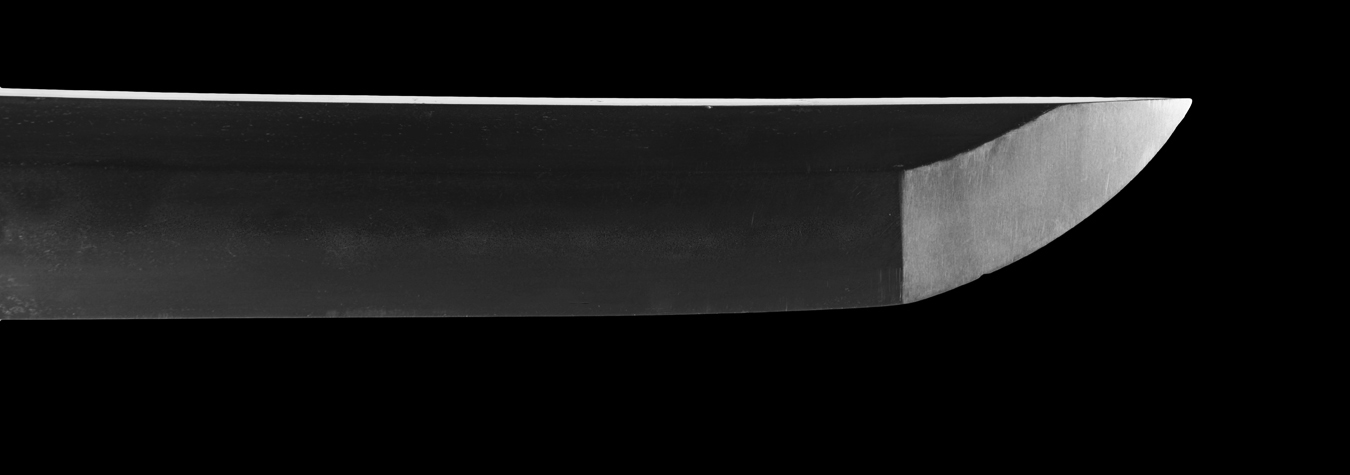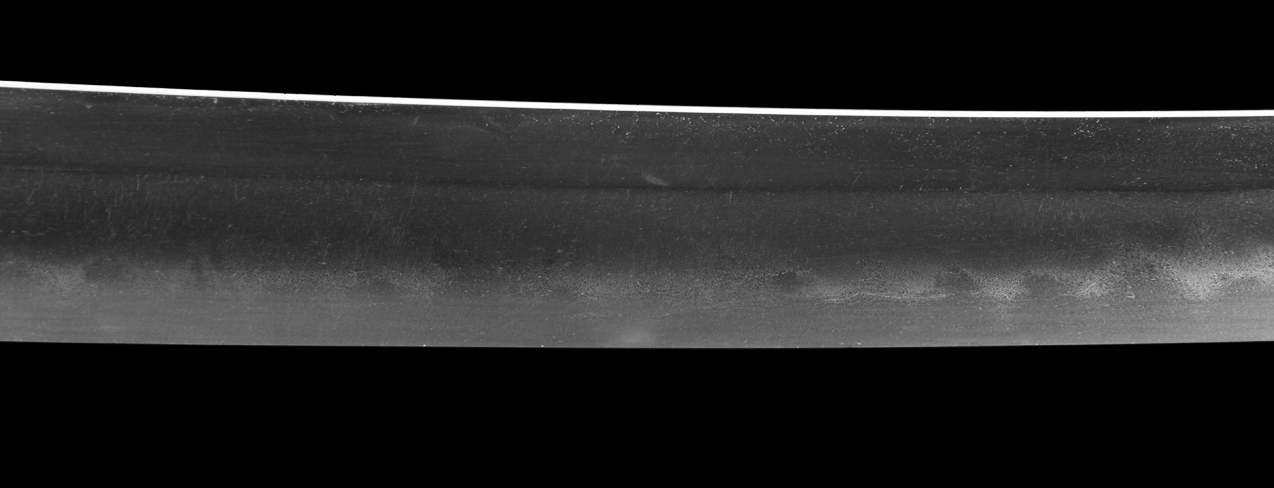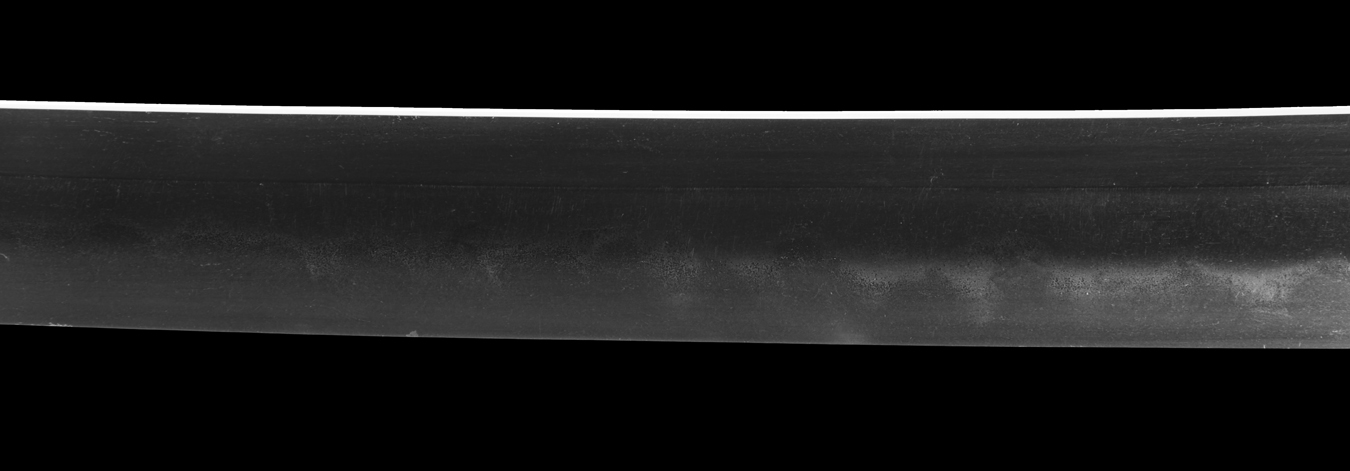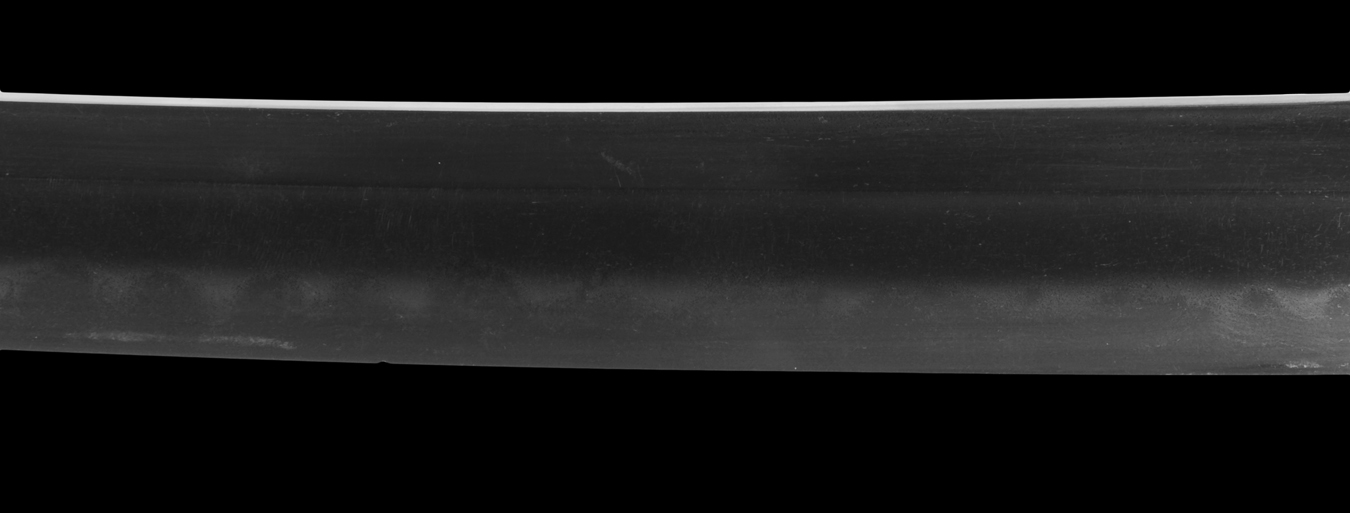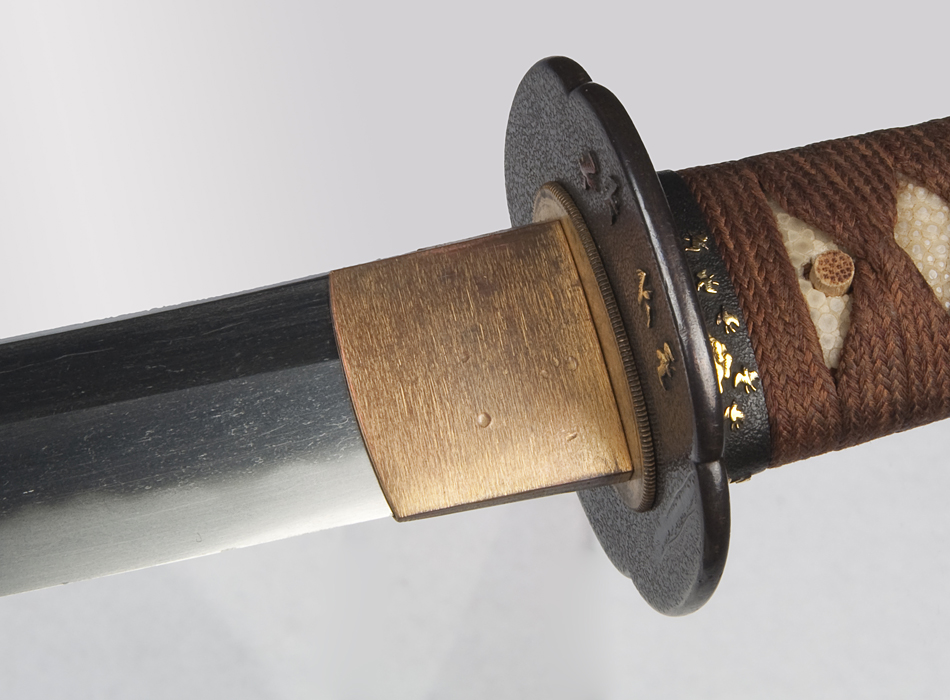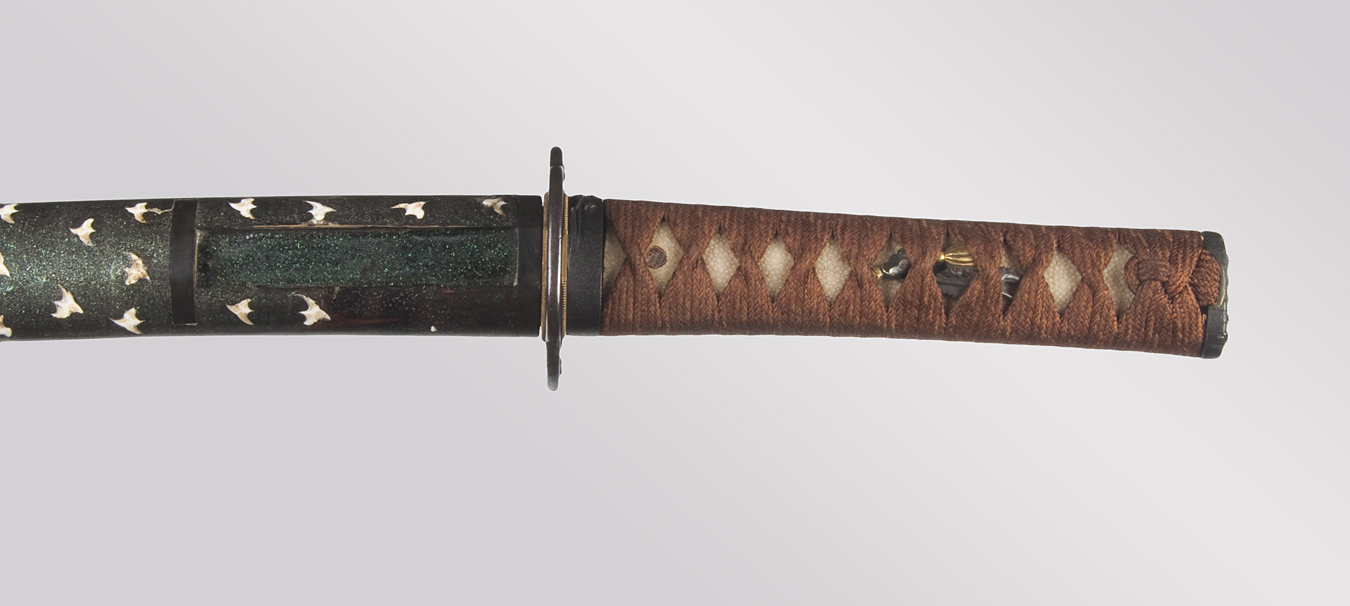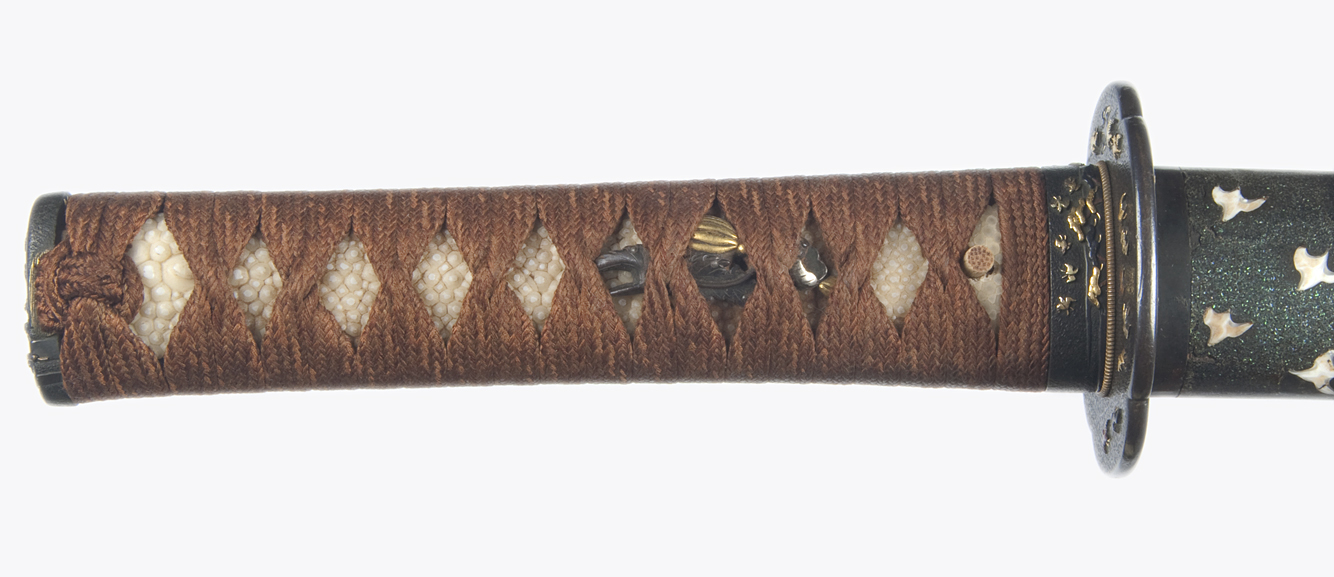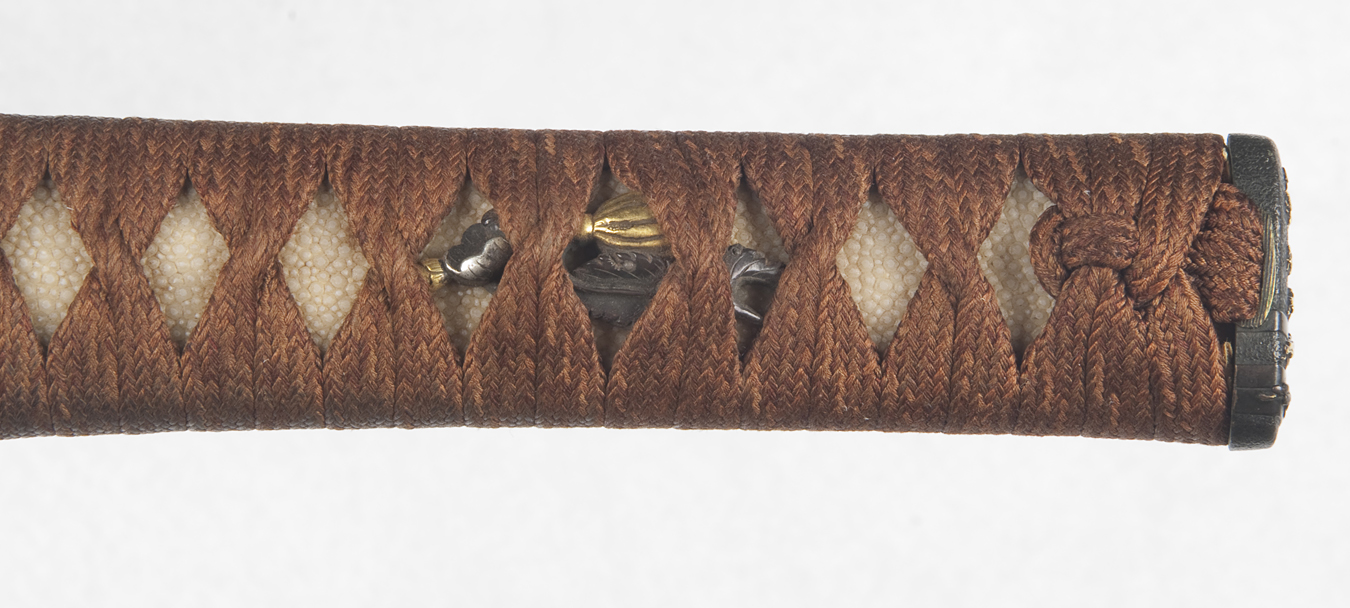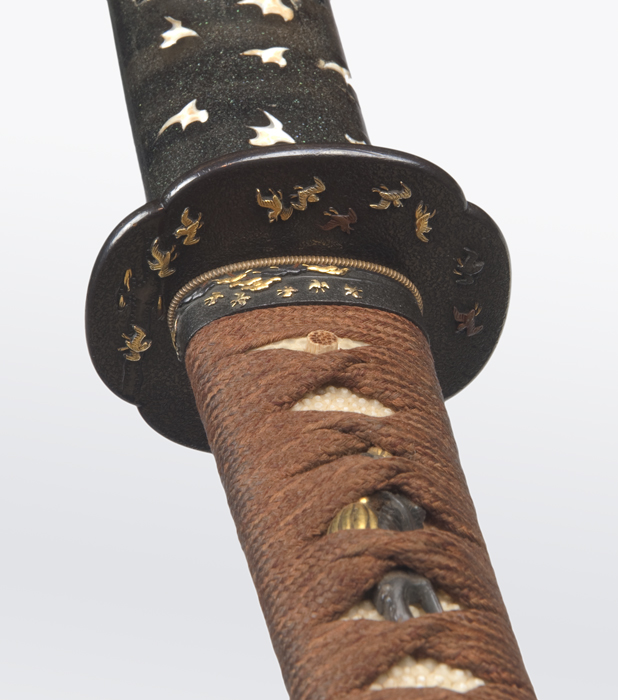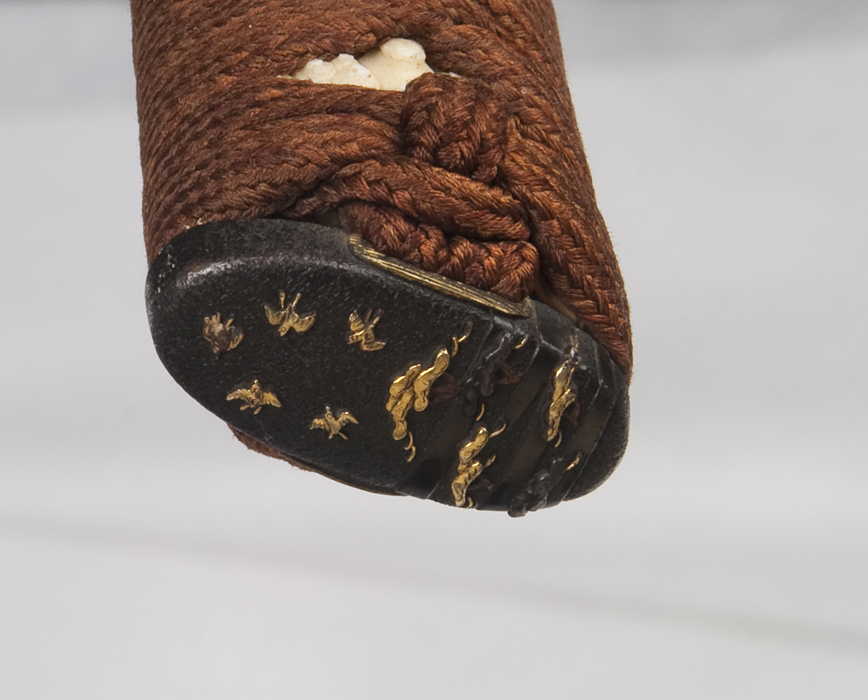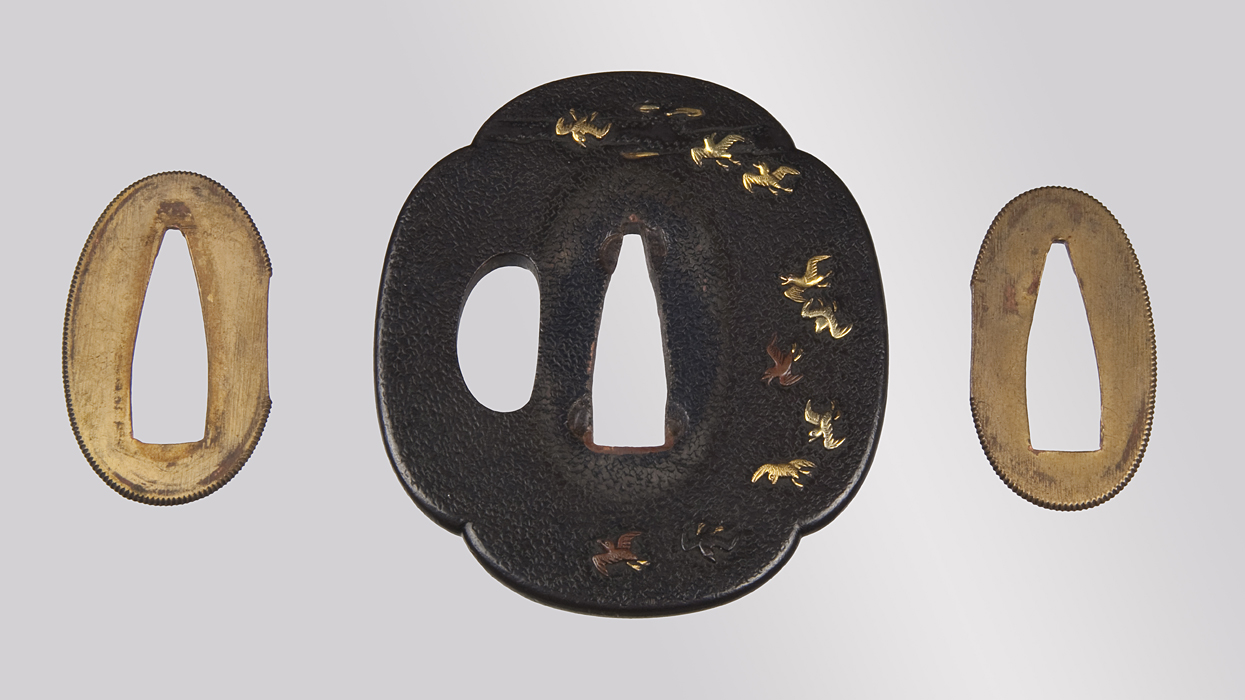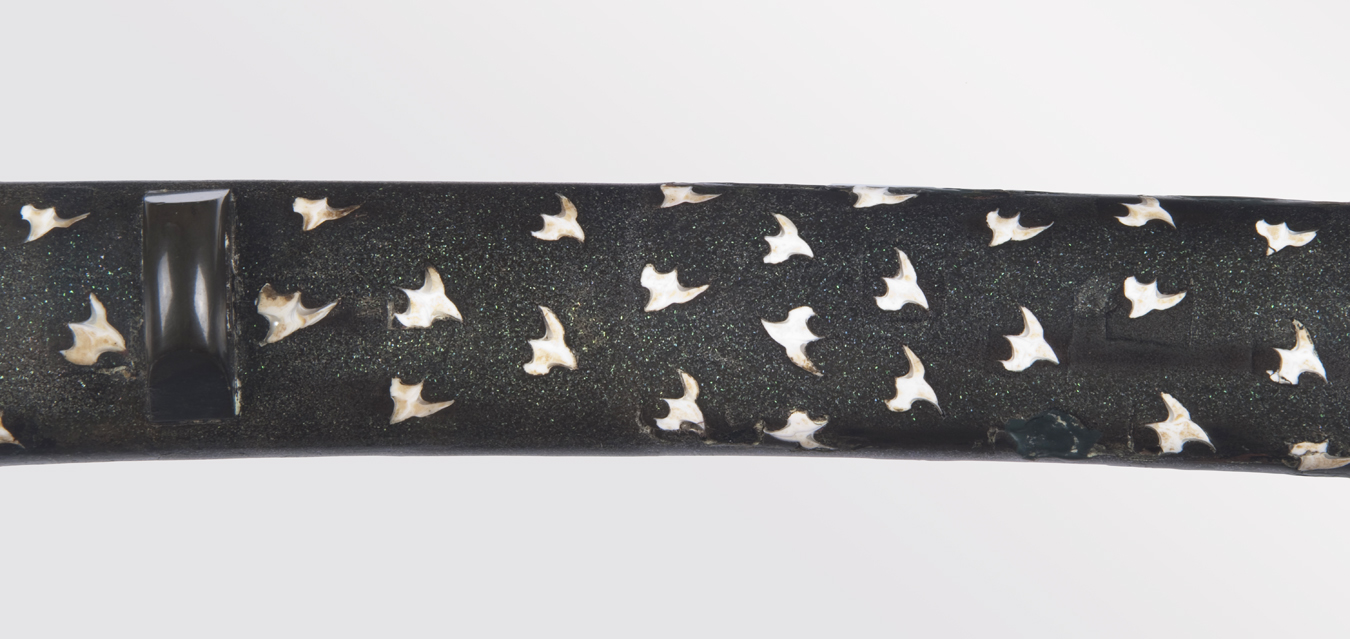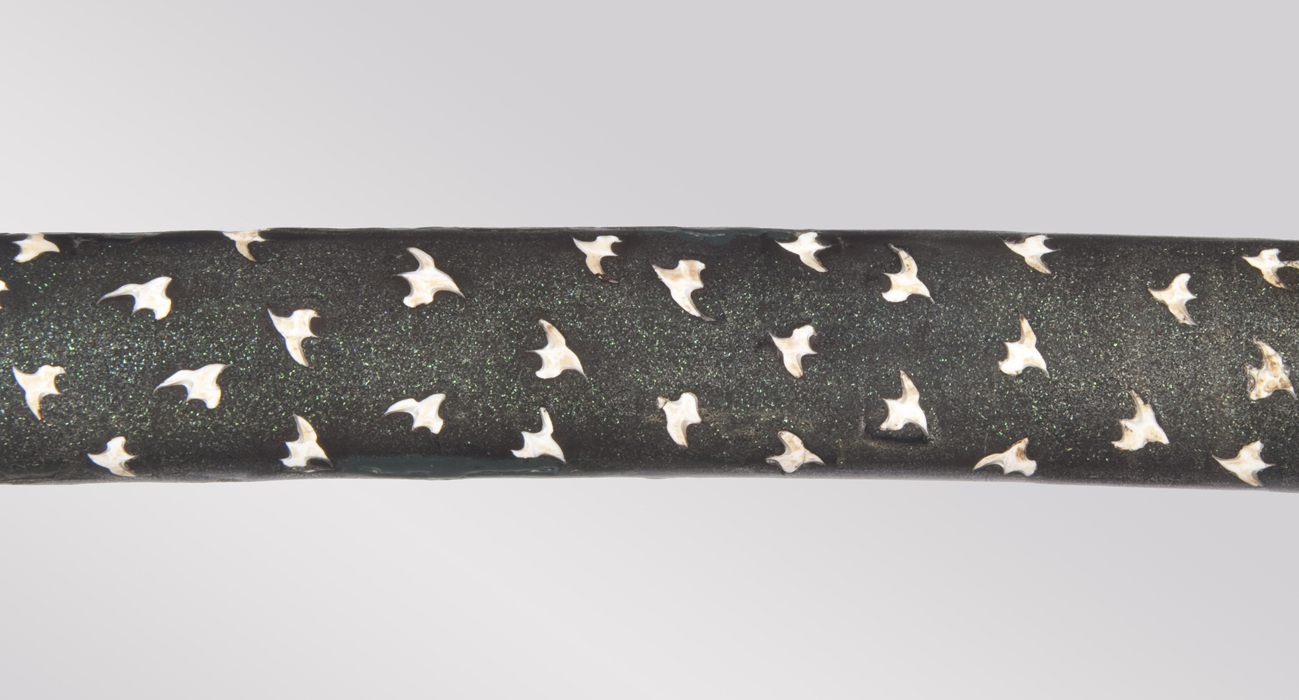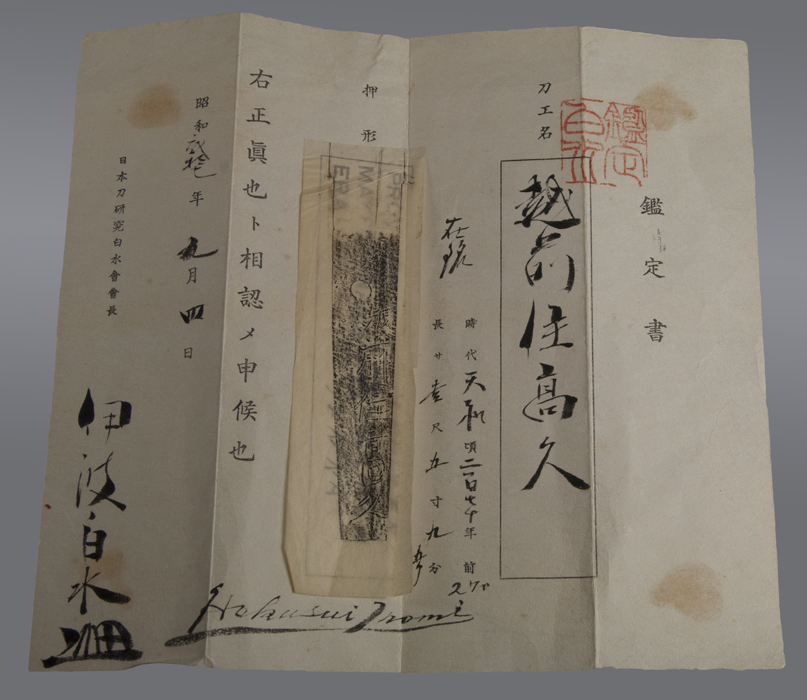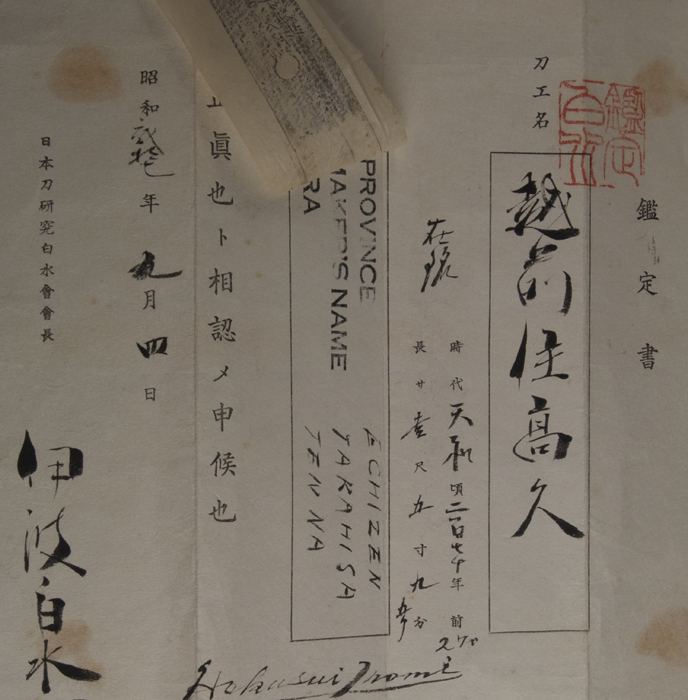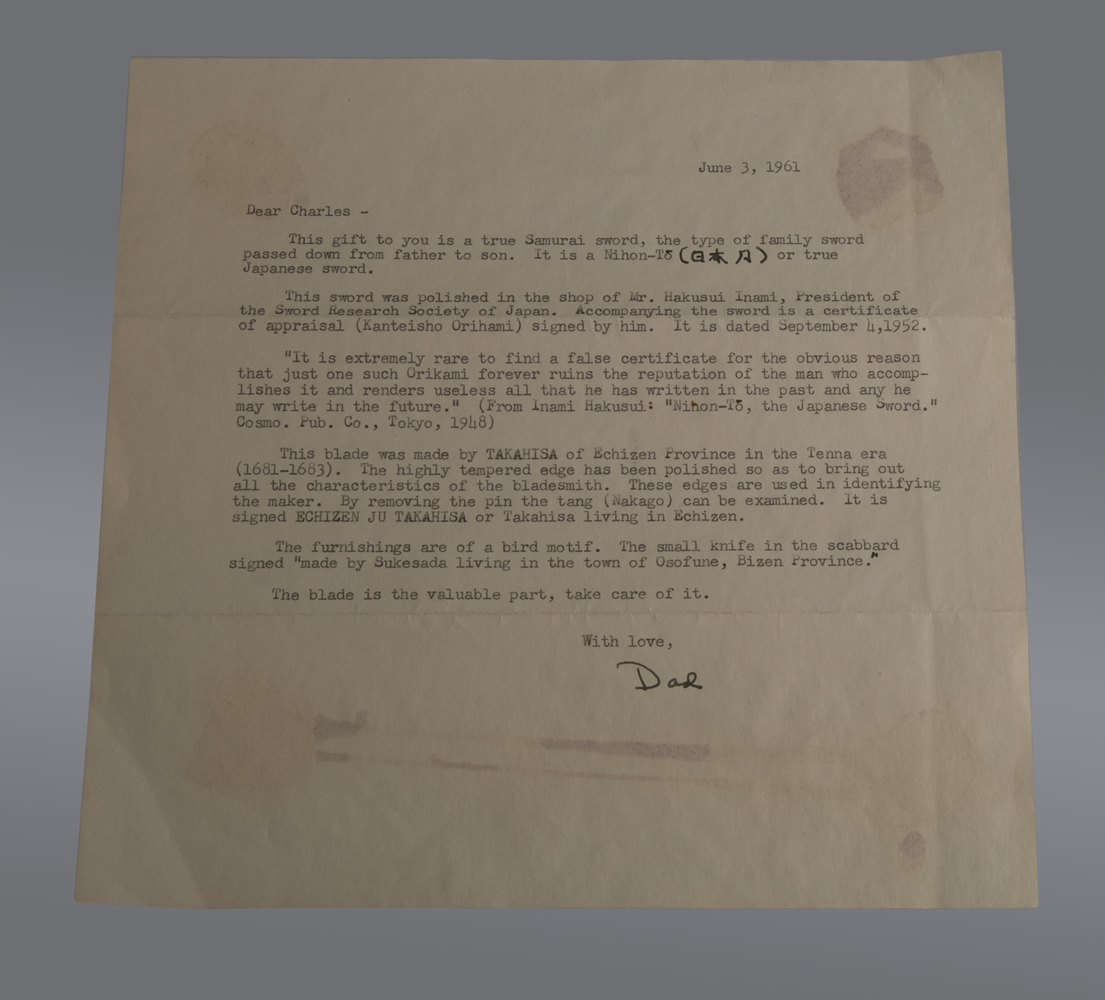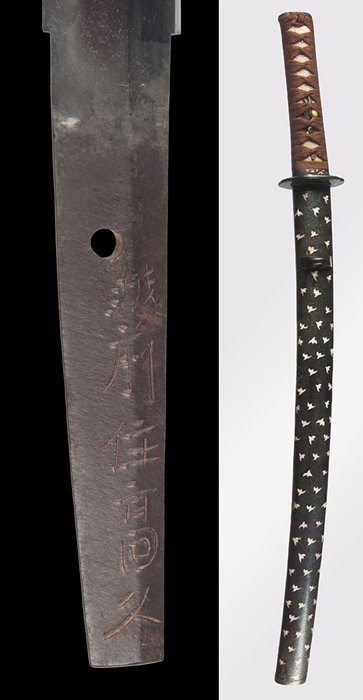|
| |||||||||||||||||||||||||||||||||||||||||
Hamon : Nie-deki gunome midare with some togari. Lots of nie in the nioi-guchi. The hamon is wide and dynamic. There are thick ashi and sunagashi is present.
Boshi : Midare-komi on the ura and ko-maru on the omote.
Kitae : Ko-Mokume hada with ji-nie. Masame in the shinogi-ji.
About this sword : This is a wakizashi by Echizen Takahisa. He was active around the Tenna nengo, circa (1681-1684). He was an Echizen-Seki smith and this sword shows the style of the tradition clearly. Mainly being strongly in the vain of shinto toku den with lots of nie, but also a mixing in of Mino traits such as togari.
The blade is in old polish. There are light surface scratches, some light blemish on the surface and a few tiny chips. The hadori of this polish is light and in an old style. It is a well made blade and has no kizu.
This sword has its original Edo period koshirae. The theme is chidori birds and all of the fitting are well made. The saya is done in green urushi with chidori brid shapes made from fish vertebra. It is an great condition for its age. There are old repairs to it in some areas. This shows that it was used and well cared for in its day. The tsuka ito is old as is the same. The seppa are the original ones for this koshirae. They are correctly fitted and matching.
This wakizashi is accompanied by a 1952 origami by Inami Hakusui and a gift letter about the sword from a father to a son dated June 3rd, 1961. Inami Hakusui wrote "Nippon-to: The Japanese Sword" (1948). This was one of the first books in English on Japanese swords. His kantei is well regarded but seldom seen. This paper is rather precious. The letter from the father to son is very interesting and a charming part of the blades history. The letter indicates that it was in fresh polish at that time and had a kozuka. The blade has light scratches and marks now and there is no kozuka. At that time, the letter mentions that the valuable part is the blade. In recent times, intact and non-contrived Edo period koshirae are rare and highly appreciated.
A well made wakizashi with an authentic koshirae and an interesting recorded history. Both the Inami Hakusui paper and the letter are included. A great opportunity to own an attractively mounted and well-made wakizashi.
$5500



